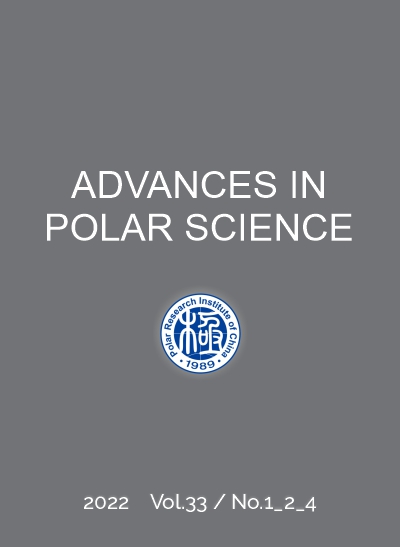Publication: Advances in Polar Science (APS). Vol. 33, No. 1, 14~27, March 2022
To download the publication please click on the download link at the bottom of the page
Author: FENG Yubin, LI Dong, ZHAO Jun, PAN Jianming, ZHANG Haisheng, HAN Zhengbing and ZHU Qiuhong
DOI: 10.13679/j.advps.2021.0017
CNARC member: Polar Research Institute of China (PRIC)
Abstract: Sea ice melt water and circumpolar deep water (CDW) intrusion have important impacts on the ecosystem of the Amundsen Sea. In this study, samples of nutrients and phytoplankton pigments from nine stations in the eastern Amundsen Sea were collected during the austral summer. Based on in situ hydrological observations, sea ice density data from satellite remote sensing, and chemical taxonomy calculations, the relationships between environmental factors and phytoplankton biomass and community structure were studied. The results showed that with increasing latitude, the contribution of sea ice melt water (MW%) and the stability of the water body increased, and the depth of the mixed layer (MLD) decreased. The integrated concentration of chlorophyll a (Chl-a) ranged from 21.4 mg·m−2 to 148.4 mg·m−2 (the average value was 35.7±53.4 mg·m−2). Diatoms (diatoms-A [Fragilariopsis spp., Chaetoceros spp., and Proboscia spp.] and diatoms-B [Pseudonitzschia spp.]) and Phaeocystis antarctica were the two most widely distributed phytoplankton groups and contributed 32%±16% and 28%±11%, respectively, of the total biomass. The contributions of Dinoflagellates, Chlorophytes, Cryptophytes, the high-iron group of P. antarctica, and Diatom group A were approximately 17%±8%, 15%±13%, 9%±6%, 5%±9%, and 3%±7%, respectively. The area with the highest phytoplankton biomass was located near the ice-edge region, with a short time lag (Tlag) between sampling and complete sea ice melt and a high MW%, while the area with the second-highest Chl-a concentration was located in the area affected by the upwelling of CDW, with thorough water mixing. Vertically, in the area with a short Tlag and a shallow MLD, the phytoplankton biomass and proportion of diatoms decreased rapidly with increasing water depth. In contrast, in the region with a long Tlag and limited CDW upwelling, the phytoplankton community was dominated by a relatively constant and high proportion of micro phytoplankton, and the phytoplankton biomass was low and relatively stable vertically. Generally, the phytoplankton community structure and biomass in the study area showed high spatial variation and were sensitive to environmental changes.
Key words: Amundsen Sea, sea ice melt water, mixed layer depth, phytoplankton, pigments, biomass


